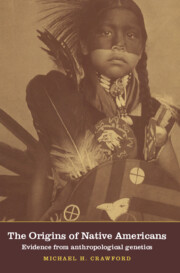Book contents
- Frontmatter
- Contents
- Preface
- Acknowledgement
- 1 Origins of New World populations
- 2 Population size and the effects of European contact
- 3 Demography of Amerindian populations
- 4 Genetic variation in contemporary populations of the Americas
- 5 Population structure of Native Americans
- 6 Morphological variation
- 7 The survivors
- References
- Author index
- Subject index
4 - Genetic variation in contemporary populations of the Americas
Published online by Cambridge University Press: 01 May 2010
- Frontmatter
- Contents
- Preface
- Acknowledgement
- 1 Origins of New World populations
- 2 Population size and the effects of European contact
- 3 Demography of Amerindian populations
- 4 Genetic variation in contemporary populations of the Americas
- 5 Population structure of Native Americans
- 6 Morphological variation
- 7 The survivors
- References
- Author index
- Subject index
Summary
INTRODUCTION
Before we delve into the genetic variation observed in the contemporary native populations of the Americas, some causes of this phenomenon must be explored. It is highly unlikely that the patterns of variation observed in today's Amerindian populations resemble those that existed in pre-Columbian times. The present patterns of observed genetic variation are a result of a melange of factors. These are:
(1) The numbers and sizes of migrations (expansions) across Beringia. As discussed in chapter 1, there is considerable controversy as to the number of migrations or demic expansions, from Siberia to Alaska, which added genes to the populations of the Americas. What proportion of the genetic variation is due to the heterogeneity of the founding populations and what proportion is made in America? If the ancestral groups were small in size, then stochastic processes would have contributed much to the observed variation, especially if these groups were large in number.
(2) The continuation of gene flow into the Americas after the last glaciation. My fieldwork with the Eskimos of St. Lawrence Island and Wales, Alaska, revealed that despite the severest impediments to gene flow, such as political borders and hostile troop concentrations, contact between the Old and New Worlds continued. Up to World War II, Alaskan Eskimos crossed the winter ice pack into Siberia to obtain wives. It is my contention that social contacts persisted in the Norton Sound region between the Eskimo groups of both sides of the Bering Strait and that complete reproductive isolation between the Old and New Worlds is a myth.
- Type
- Chapter
- Information
- The Origins of Native AmericansEvidence from Anthropological Genetics, pp. 88 - 148Publisher: Cambridge University PressPrint publication year: 1998



